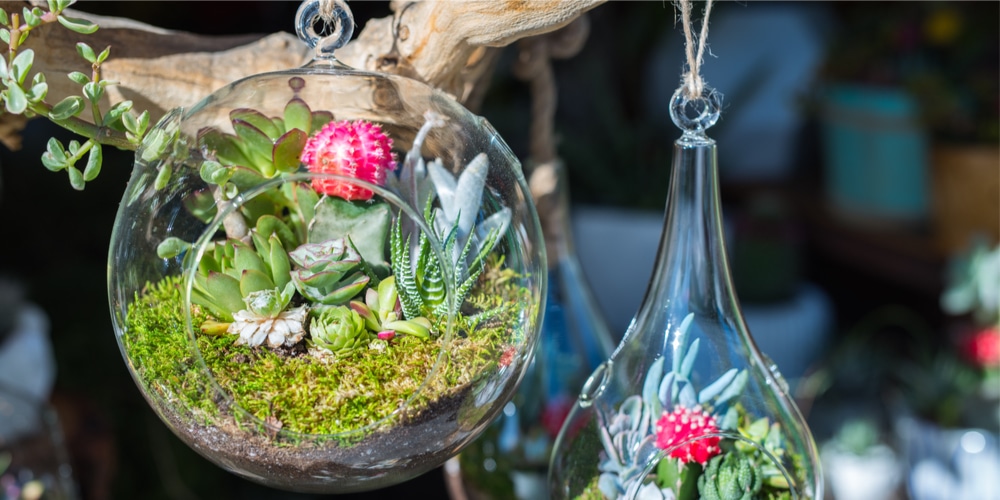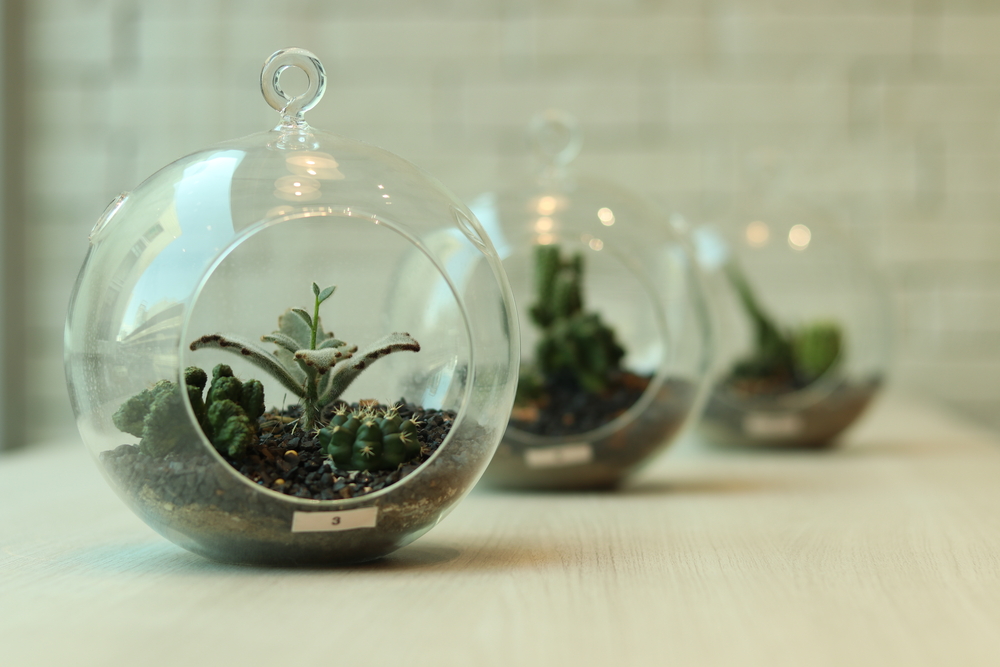Did you know that you can grow plants in a glass container? It’s true! You just need to make sure the plants get enough light and water.
Glass containers are a great way to show off your plants, and they’re also easy to take care of. Plus, they look pretty on your windowsill or desk. Keep reading for tips on how to grow plants in a glass container.
How To Grow a Plant Using a Glass Container
There are many different ways to grow plants, and using a glass container for succulents and cacti is one option that can be both stylish and effective.
Here are a few tips on how to grow plants in a glass container:
Choose the Correct Size
Choosing the wrong size container is detrimental to the proper growth of your plant. The container should be big enough to accommodate the roots but not so large that the plant is awkwardly smaller than the pot itself.
If the glass container is too large, the roots may be drowned if the water is not soaked up fast enough.
On the other hand, if the pot is too small, then the plant will become pot-bound. This will stunt plant growth by not providing the necessary amount of space and nutrients for the plant.
Use Good Quality Soil in Your Glass Container
It is important to use good quality soil with good drainage in your glass container, as this will help to ensure that your plants remain healthy.
Poor quality soil can quickly become compacted, preventing air and water from reaching the roots of your plants. This issue can lead to root rot and other problems.
In addition, poor quality soil is more likely to harbor pests and diseases, which can damage your plants. If this is an indoor plant, sometimes bugs and flies can be an issue. Using good potting soil will help prevent this problem from occurring.
Place Your Container in an Appropriate Spot
If your plant is in a small enough glass container, you can also move it around your house throughout the day whether it needs more or less sunlight.
Some plants thrive in bright, direct sunlight, while others prefer a shaded environment. Make sure that the temperature is suitable for your plant once you have found a spot with the right amount of light. Most plants prefer temperatures between 60 and 75 degrees Fahrenheit.
There are a few general tips to keep in mind when choosing a location for your indoor plants:
- Make sure to choose a spot with plenty of natural light if you are not using specific plant grow lights.
- Consider the humidity levels in your home. Some plants require high levels of humidity, while others do better in drier environments.
- Indoor plants need to be watered regularly, so choose a location that’s near a sink or other water source.
- PETS! If your animals think of plants as play toys, consider placing your plants in rooms where your animals do not usually go in.
Water Correctly
Check the soil regularly to see if it is dry; if it is, water until it is moist but not soggy.
With glass containers, overwatering can be a problem as there are usually no drainage holes. Overwatering is one of the most common causes of plant death. However, if you are using transparent glass, you will be able to see if the soil is dry or not.
A general rule is that if the first top inch of soil is dry, you probably need to water the plant.
Best Plants for Glass Containers
Glass containers can make a great addition to any home, and they offer a unique way to display your plants. If you’re looking for the best plants to grow in glass containers, here are some of the best options:
Cacti
Despite their tough exterior, cacti are relatively easy to care for. They require very little water and can tolerate long periods of drought. Cacti also prefer bright sunlight, so they should be placed in a sunny spot in your home.
Basil
Basil is a delicious herb that can add flavor to all kinds of dishes. And it’s easy to grow your basil in a glass container. All you need is some potting soil, a sunny spot, and some water. You can also fertilize your basil plant every few weeks to keep it healthy and productive.
Flowers
Glass containers are a great way to show off vibrant flowers. Consider adding a mixture of annuals and perennials so you can enjoy blooms all year long.
Aloe
Aloe plants are easy to care for and make a great addition to any home. They prefer bright, indirect light and well-drained soil. Water your aloe plant about once a week, allowing the soil to dry out completely between watering. These plants are succulents, so they store water in their leaves.
Spider Plant
A spider plant is a great option for anyone looking for a low-maintenance houseplant. These plants are tolerant of a wide range of conditions, and they can even thrive in low-light environments. Plus, spider plants are very easy to propagate, so you can quickly create a bountiful display.

